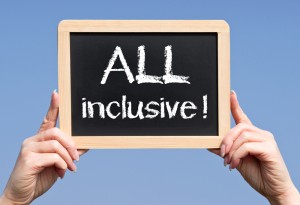
Around 20-30% of stroke survivors are thought to have aphasia: a specific difficulty with language. This can include problems speaking, finding words or understanding speech or written text. With almost one third of the stroke population experiencing aphasia, it is important to ensure that they are not excluded from research. Excluding those with aphasia can affect how relevant the research is in clinical or ‘real world’ settings. Developing a very effective rehabilitation intervention, for example, may not be so effective if it cannot be accessed by and has not been researched in one third of the stroke population.
A new set of resources has been developed by the ‘NIHR Clinical Research Network: Stroke’ to encourage and help researchers include stroke survivors with aphasia in their studies. ‘Enabling people with aphasia to participate in research: resources for stroke researchers’ include aphasia friendly study documentation, images, and communication tips.
https://www.youtube.com/watch?v=ObO7HfNAOk4
Video produced by NIHR Clinical Research Network: Stroke.
Method
The research team worked with stroke and aphasia specialists, researchers and people with aphasia throughout the project. The team consulted with researchers to find out what challenges they faced when including people with aphasia in their studies. They also consulted people with aphasia about their preferences for the materials. Finally, a group consisting of both researchers and people with aphasia was set up to help develop the new materials in conjunction with a graphic designer.
Resources
The project resulted in the design and development of over 200 images and matching clusters of text, describing ‘the stroke story’ and ‘the research story’.
- The stroke story has images and text which range from explaining what a stroke is, to what treatment is provided and by which hospital staff.
- The research story has images and text which can be used to explain various aspects of research including what the study involves and why the study is being carried out.
The project also resulted in the development of example templates which can be populated using the aforementioned images and text, including:
- Participant information form.
- Consent form.
- Meeting invitation.
- Research results.
The following information was also included in the resource pack:
- Information for researchers on aphasia and links to various aphasia resources.
- Tips on communication skills and how to access further communication training.
- Information on how to make writing accessible to people with aphasia, including how to conduct a Flesch-Kincaid Readability check to make sure the language is written at an appropriate level.
Stroke Elf’s view

The inclusion of people with aphasia in research varies depending on the type of study, with some studies including more people with aphasia than others (Ali, Bath, Lyden, Bernhardt & Brady, 2014; Townend, Brady & McLaughlan, 2007). Although there are a number of reasons why this could be the case, access to aphasia friendly images, text and templates would be welcomed by many researchers.
The templates developed in this project, such as the consent form, may be particularly useful to researchers. When designing the consent form, it is clear that a balance has been struck between ensuring all of the necessary information has been understood and doing so in an aphasia friendly manner. Whilst the research team acknowledge that the amount of text included is more than typically ideal, the user group recognised that this was necessary to both ensure informed consent and comply with ethic requirements*.
The participant information/research summary templates, however, are not as clearly laid out. The participant information template contains only three suggested items: broad overview of the study, what the person will do and how/where they will have to do it. It is likely that researchers will have to include more than this on an information sheet to ensure the study participant can make an informed decision about whether or not to take part in the research. ‘The research story’ collection of images and text are helpfully organised under headings which range from ‘what is the research?’, ‘why are we doing the research?’ and ‘what happens in the research?’ to ‘who will see the information about me’ and ‘what will happen after the research’. In my opinion all of these headings should be included in a study information template.
Overall these resources are welcomed. Researchers will find the images and corresponding text particularly useful when designing their own study literature. Hopefully this will decrease the number of people with aphasia excluded from research studies, allowing those with aphasia to take part in research which may ultimately influence therapy or treatment for others in the future.
*Researchers should always follow the advice of the relevant ethics committee when designing study literature.
Links
Enabling people with aphasia to participate in research: resources for stroke researcher. National Institute for Health Research Clinical Research Network: Stroke, 2014.
Ali, M., Bath, P. M., Lyden, P. D., Bernhardt, J., & Brady, M. (2014). Representation of people with aphasia in randomized controlled trials of acute stroke interventions. Int J Stroke, 9(2), 174-182. [PubMed abstract]
Townend E, Brady M, KcLaughlan K. (2007) Exclusion and inclusion criteria for people with aphasia in studies of depression after stroke: a systematic review and future recommendations. Neuroepidemiology, 29, 1–17. [PubMed abstract]
